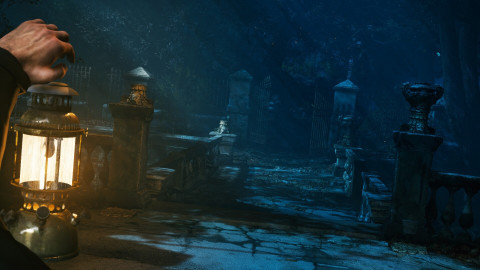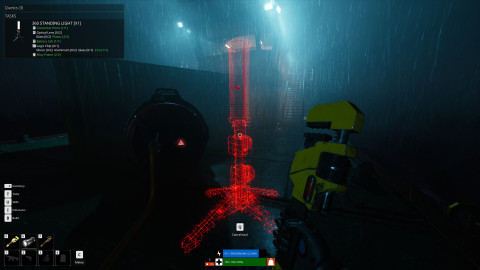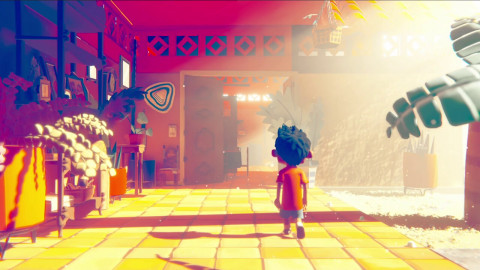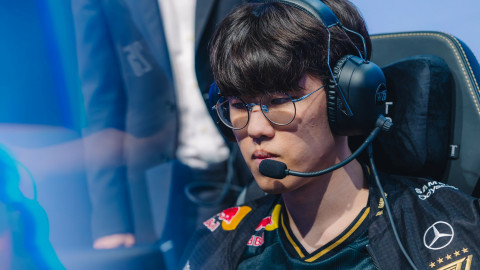
Robo Recall, a VR game developed by Epic Games, was one of the most anticipated VR games before its release on March 2nd. With its beautiful design that utilizes the Oculus Touch, the dynamic soundtracks, and the innovative technology of Epic Games, Robo Recall set a new bar for VR games.
Robo Call was even far more advanced than Bullet Train, Epic Games’ previous VR game. It’s easy to think that the latest game is always better than the previous ones, but Bullet Train itself was a nearly perfect VR game. It was arguably the only perfect game among tons of experimental and unfinished VR games.
But Epic Games took their games even further. It is a common case where you still miss the previous version even though you have the latest version - just like how you still want to play Sid Meier’s Civilization 5 even though you have Civilization 6. However, once you play Robo Recall, you will never miss Bullet Train. You will notice the difference the moment you begin playing Robo Recall.
Let us hear from Kwangsub Shin, senior technical designer at Epic Games, on how Robo Recall was developed. Epic Games has in fact been working on VR long before the development of Bullet Train. Let us take a closer look at the development of Epic Games’ VR technology, from Elemental VR to Robo Recall.

■ Elemental VR – the first VR content developed by Epic Games

Elemental VR was the first VR content published by Epic Games. It was a prototype made by novice-level technology. It was rough around the edges, but Epic Games could learn many important things about VR games, one of them being “the movement.”
In-game characters usually move faster than real people. Epic Games learned that they have to lower the speed by one-third to match the in-game movement to actual movement. The movement on slopes was another problem. Walking up or down a slope in VR games requires eye tracking, which can make the player feel sick. The direction that the player is looking at and the direction of the actual movement had to match each other.

Other things Epic Games learned from Elemental VR are: snowflakes can add a three-dimensional effect, particle reflection can add a sense of reality, and audio is very important.
■ Strategy VR – applying the Position Tracking

Strategy VR is another early VR game created by Epic Games. It is a defense game set in a small town, and the town can be observed more precisely by looking down.
The developers studied human psychology and applied the “position tracking” technology to VR games. The player can move the camera around by moving his or her head around. People tend to look down to get a better look at some small objects. The developers incorporated this behavior into a VR game, providing the players with a better sense of reality.

The main issue was to keep the tracking working without any lag. The players cannot check the outside environment while playing a VR game, so they often accidently walked out from the effective area, which caused the position tracking to stop. Epic Games solved this issue by making the game turn black and white as the player walks out from the effective area.
■ Couch Knights VR

Couch Knights is a game where the player sits on a couch and controls the characters on a table. It is a game that brought a control pad over to VR. The original concept of the game was much more violent, where the player had to break out from an interrogation room. But the developers decided that such a game is too violent to be revealed at a worldwide event like the GDC.
So they just kept the tips they got from developing the game, and started to develop Couch Knights. The players found it very awkward that their hands don’t move in the game, (the technology was not capable of this back then) and the immobile hands caused an Uncanny Valley.

It was an experimental game. Epic Games learned two important things from it. 1. Body language works great in VR games, and 2. Facial expressions can cause another Uncanny Valley.
■ Showdown

Showdown, released in 2015, is more like a cinematic animation than a game. It was by far the most Epic Games-like VR game that was ever made.
Epic Games mostly focused on visuals for this game. They tried many different ways to produce the best visual effects, including removing all light effects from the background, replacing fake shadows with dynamic shadows, and applying dynamic lights only on firing guns.

Showdown was the precursor to Epic Games’ next games. Epic Games learned how to apply different techniques to different features by solving the graphical issues that Showdown had. They created different types of geometry and the “reflection” effect, which became the core technique in VR games later.
■ Bullet Train

Bullet Train is a prime example of how VR games should look like. Originally, Bullet Train was designed to be a non-moving shooting game, but this did not generate enough hype around the game.
Then, Epic Games made the movement automatic and kept the shooting part, but this caused other technological issues with position tracking. Finally, they came up with the idea of teleportation.

The playable main character became a superhero that uses teleport. When the player teleports, the game goes into slow-motion and the player is able to catch a bullet or throw it back at the enemies. Giving the player a special identity made the game much more compelling.
■ Robo Recall – the Reference for VR games

And finally, Robo Recall, the ultimate VR game, came out. Epic Games already had everything they needed. They just had to add up those things and blend them well with their technology in game development.
The developers worked hard on improving static meshes as well as reducing the GPU overload. They combined meshes to reduce draw call and rendered the objects that use the same meshes together.
They also focused on anti-aliasing for better visuals. In addition, they made the game available to mod. Robo Recall is almost a perfect game and does not have much room for improvements. However, Epic Games designed the game to be F2P and released all game assets, with the hope that the game can be improved with a variety of mods.
Sort by:
Comments :0







